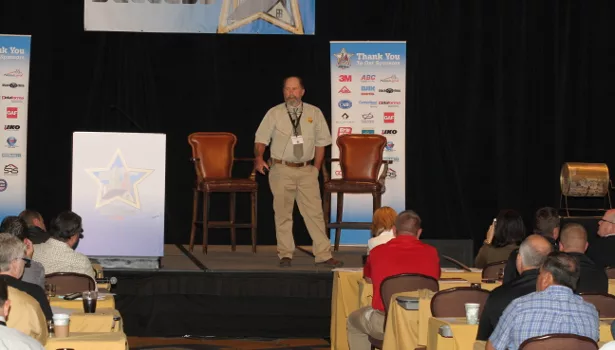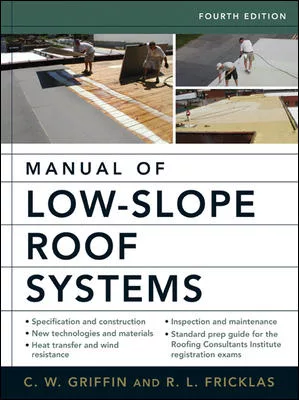Best of Success Seminar: Simplify Compliance and Boost Profits With Guardrail Systems


Since 1965, Chip Macdonald has been active in many aspects of the construction trades as a roofer, framing carpenter, draftsman, estimator, project manager and general contractor. As president of Best Safety LLC in Cambridge, N.Y., he has provided safety training for union members and building contractors throughout the Northeast since 1977. He combined his passions this year by testing several different residential guardrail systems, and he presented his findings at Best of Success. Macdonald explored the pros and cons of both personal fall arrest systems and guardrail systems, comparing their performance from both a safety and a profitability point of view. With a well-trained, well-seasoned crew, guardrail systems offer better performance and increased profitability on most residential projects, concluded Macdonald. His prediction that guardrail systems would become standard operating procedure for work on most sloped roofs was reflected in the title of his presentation: “The Future of Residential Fall Protection.”
Since 1970, OSHA has required all construction workers to be protected from falls greater than 6 feet by personal fall arrest systems (PFAS), personal safety net systems or guardrail systems. As of March 15, 2013, OSHA has enforced STD 03-11-002, which removed some temporary exemptions for residential roofing contractors, requiring them to use PFAS, safety nets or guardrails unless they can be proven to be infeasible or pose a greater hazard.
In the vast majority of cases since 1972, fall protection has taken the form of PFAS, noted Macdonald, but harnesses and lifelines have their limitations. PFAS can be difficult to install compliantly on every roof, and purchasing, inspecting and replacing equipment can be costly. It is time consuming to train and retrain workers, who need constant supervision. PFAS can decrease workers’ productivity and even pose a greater hazard to the individual roofer, as well as his co-workers, under some roofing conditions, including tile roofs.
Guardrail systems differ from PFAS because they are an engineering control that prevents the fall from happening, noted Macdonald. “PFAS and safety nets allow the fall to occur, but are intended to protect workers from the terminal effects of an arrested fall,” Macdonald said. “Once properly installed on all unprotected edges, guardrails engineer the fall out of potential exposure to the worker — a fall never occurs. Therefore guardrails cannot be considered a greater hazard than any measure except another engineering control, such as fall restraint.”
Guardrail systems have a greater initial cost than PFAS and they take time and effort to set up, Macdonald stated, but they have inherent benefits, including the physical freedom to move unrestrained, improved material handling and the elimination of trip hazards posed by lanyards and lifelines. “Guardrails systems increases productivity while maintaining 100 percent fall prevention,” he said. “They also provide psychological relief that a fatal roof fall is not feasible.”
Macdonald cautioned that guardrail systems have their own limitations. Guardrail systems must be installed and dismantled in strict compliance with the manufacturer’s operating manual by employer-authorized installers who are comprehensively trained. Workers are required to wear PFAS while installing and removing guardrail systems. The guardrails require pre-shift and regular inspections by a competent person, and they must be re-inspected after any incident that could affect their integrity. “If it fails, there is no backup,” Macdonald said.
Walking attendees through examples of typical residential roofing jobs, Macdonald crunched the numbers on basic gable and hip roof projects using both PFAS and guardrail systems. In both cases, the use of guardrails systems reduced labor costs and increased profitability. Macdonald summed up his findings this way: “Due to OSHA issuing STD 03-11-002, large and small residential contractors installing residential guardrail systems will quickly realize increased productivity, increased profits and simplified OSHA compliance.”
Macdonald closed by reminding attendees that profitability and compliance issues aside, in roofing safety is a matter of life and death. “Most important of all, plan residential guardrail systems before you climb, or pay the consequences,” he said.
Looking for a reprint of this article?
From high-res PDFs to custom plaques, order your copy today!



